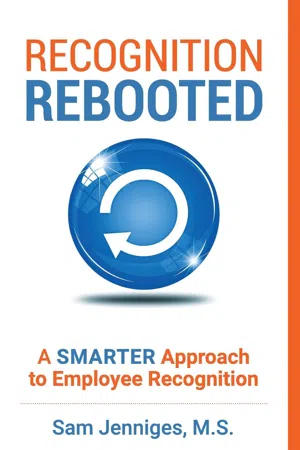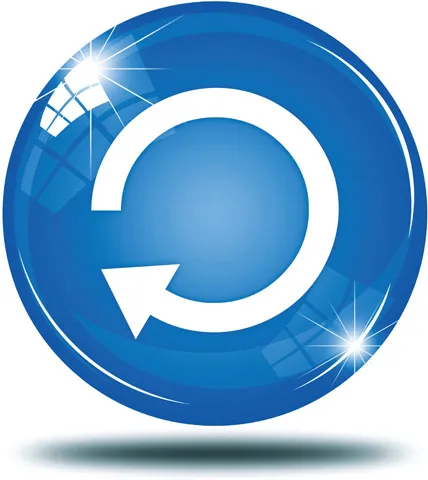![]()
How to Deliver Authentic Recognition
![]()
Recognition Delivery Essentials (TIPSS)
MARK: Know what I respect about Donna?
DAVID: Narrow it down.
She wants to do the right thing and loves to learn.
Also, my own boss asked me for my opinion. Pinch me.
Now the truth comes out.
Seriously. It’s the beginnings of recognition. It makes me feel incredibly valued that she acknowledged my manager survey ratings and wanted to know why I score higher in the valued/appreciated category.
Cool. Did you update her on how far we’ve gotten?
Went through notebook. She’s intrigued and said it made sense to her. Wants to find ways to help us and our teams feel more valued. She liked the simplicity.
She knows what she could have done differently with Ajay, but is unclear how.
I am sure we can help with that once we get there. BTW, I already have her kicking off the lunch and learn.
Me too, or some involvement. Told her I’d give her periodic updates when we meet.
You for sure have now committed us.
That train has left the station.
In this case, I’m good with continuing the conversation. I’m seeing that this is something I can actually do and make a difference with my team. And me too.
Small effort
…for big payoff. My favorite formula.
So, what’s next? Where’d we leave off?
Delivery. The thing Donna is asking about. The HOW to deliver recognition so there is payoff. Crass way to put it.
We would word it differently, but I like the idea of being open about motivation. Everyone wants same thing. Takes suspicion out.
Are people that damaged at work? Say something nice, they get suspicious?
It’s an org culture thing, plus some individual baggage. Last year in Ops, I sent an email complimenting the work of my employee. Haven’t done that much and the person thought I had an agenda. Like I was priming him for something I wanted later.
Could see how people go there and think it’s conditional if they’re not used to recognition. Consistency helps. Think globally, act locally and we change culture a little at a time if I may repeat myself.
Global/local—my favorite approach. So, back to “HOW” we deliver recognition.
Lunch tomorrow?
Salad time again. I’ll be thinking about how to deliver.
I can make that work–if we’re not that productive tho, then let’s cut it short and use another time to shoot the breeze.
Agree. See ya then.
After sitting down with their lunches, Mark and David compared their thinking on how to deliver recognition.
“Recognition payoff comes down to making it authentic,” said David.
“And that comes down to how it is communicated to the employee. Yet, the lack of training or mentoring, except for the lucky few, is a barrier that prevents the communication portion of recognition from being effective to our team members.”
“Every manager could take a quiz and, if asked, they would answer yes, it is important to recognize team members. So, we know the right answer; we just don’t do it.”
“I feel strongly that making it easy for managers is important. It should be simple enough to not feel like another to-do in their already demanding jobs,” said Mark.
“Doing both, making it easy and using a simple approach, could make a difference. Give me simple and effective every time because my mostly ‘do-nothing’ approach isn’t the best.”
“It would be good to walk through an example of when one of us was recognized well. Think about a time when you felt so proud of the recognition you received. Maybe something you were looking forward to telling Rebecca.”
David thought for a moment, and one, in particular, stood out from the best manager he had in his career. He briefly summarized, “When I worked in Operations, we were under pressure because of an IT issue that we called Severity Level 1—meaning top priority, all-hands-on-deck. A manufacturing issue had occurred in Asia, and, as usual, we had little influence. I pressed my team to do what we could in spite of it not being ‘our fault’ and we worked through it. The best part was that my boss told me that he really appreciated how I always—and especially this time—lead a team under pressure and specifically that I do not spend time or energy blaming or throwing my hands in the air.”
“Nice!”
“There’s more! My boss told me he was especially impressed that, when another leader voiced a ‘who caused this’ type of question, I quickly redirected the conversation to solving the problem. He said that I relentlessly—yes, he used that word—work to solve the problem even when the issue is largely outside of my influence. He credited me with the issue being resolved quickly by leading with that approach.”
“Awesome! It’s good to see your style get recognized so well. You do stand out as a leader who owns a problem that is not the team’s fault, and you help to solve it anyway rather than walking away.”
“It was really nice to have my leadership noticed.”
“So, he was specific, and he talked about the impact.”
“It was very sincere,” David added, “and it was the very next day. And I think the reason it was so memorable was that it was also very personal to me and my work style. It felt great to hear a thank you in such a specific and sincere way. In fact, now that I think about it, a reward of some sort was not part of the way he recognized me. And still, it was so memorable. So, if done well, verbal recognition can have a longer lasting impact than a reward.”
Mark nodded thoughtfully and said, “That’s how it’s done, folks! Let’s get these down.” He turned the page in the notebook, and they listed what they called Essentials (the how) for authentic recognition delivery.
Now that they had decided on the Recognition Delivery Essentials, it was important to include the business payoff for recognizing performance (the why). They knew they could draw from their earlier research and discussions to clarify what that business payoff is.
They both liked the idea of keeping these two ideas on one page. So, in addition to performance recognition, making everyone feel great, which goes a long way at work (and a good attitude is certainly helpful), Mark translated the research into what he called the Biz Payoff reminder and added that in business terms at the bottom of the notebook.
“These Essentials seem to capture the heart of delivering recognition. And I so appreciate the simplicity,” said David.
“Now that I see this in black and white, I am not sure I included all of these when I recognized a team member recently. In fact, I’m thinking about when I recognized my analyst earlier. If I had thought about it a little more deliberately, I could have told her more about the impact her work had. I am sure that would have been great for her to hear. Imagine the payoff when all the Essentials are included! Sometimes with just one minute of thought, literally.”
David validated that it doesn’t take much time and just a little energy—the good kind of energy.
“I think my approach has been to thank the person for what they’ve done specifically calling out their personal contribution to the team’s success. I didn’t separate the individual from the team and make it very personal. But I can see that the more of these Essentials we include, the bigger the payoff. It especially makes sense when I think about the example from my former boss.”
“The order really isn’t important, but include all when possible.”
They reiterated from a previous conversation that the criteria for recognizing someone be that the work had valuable impact. They believed that managers could make this part of regular conversations more often and during individual meetings with their team. They played this out to determine whether it was realistic using smaller, everyday examples.
“Let’s say a team member shared a great business book with my manager—or someone else—who loved it and couldn’t stop talking about it. And let’s say my manager hears about it,” Mark continued. “It would be simple the next time you run into your employee to say, ‘Hey, there’s some good buzz about the book you recommended to so-and-so. I hear she loves it.’”
“Good enough, right?” Mark asked. “It passes Sincere, Timely, Personal, and Specific. What about Impact, though? It had an impact, but we don’t know what it is except she’s talking about it and she loved it.”
“The bottom line is that it will add to the person’s day, and yours too, just for deciding to be generous with that small recognition. These kinds of things begin to add up for employees; you can at least see how you can reduce the risk of regrettable turnover. And why not target your high performers? Sometimes you even know there was an impact, but you don’t know to what level,” said David.
“I feel an acronym coming on!”
“If it helps me remember better, I’m all ears.”
Mark did some rearranging of the steps and rewrote the following on the next pages, remembering to include the business payoff at the bottom.
“Nice! I can remember this! As in, ‘Let me give you some TIPSS.’ It uncomplicates it, and the order doesn’t mat...



